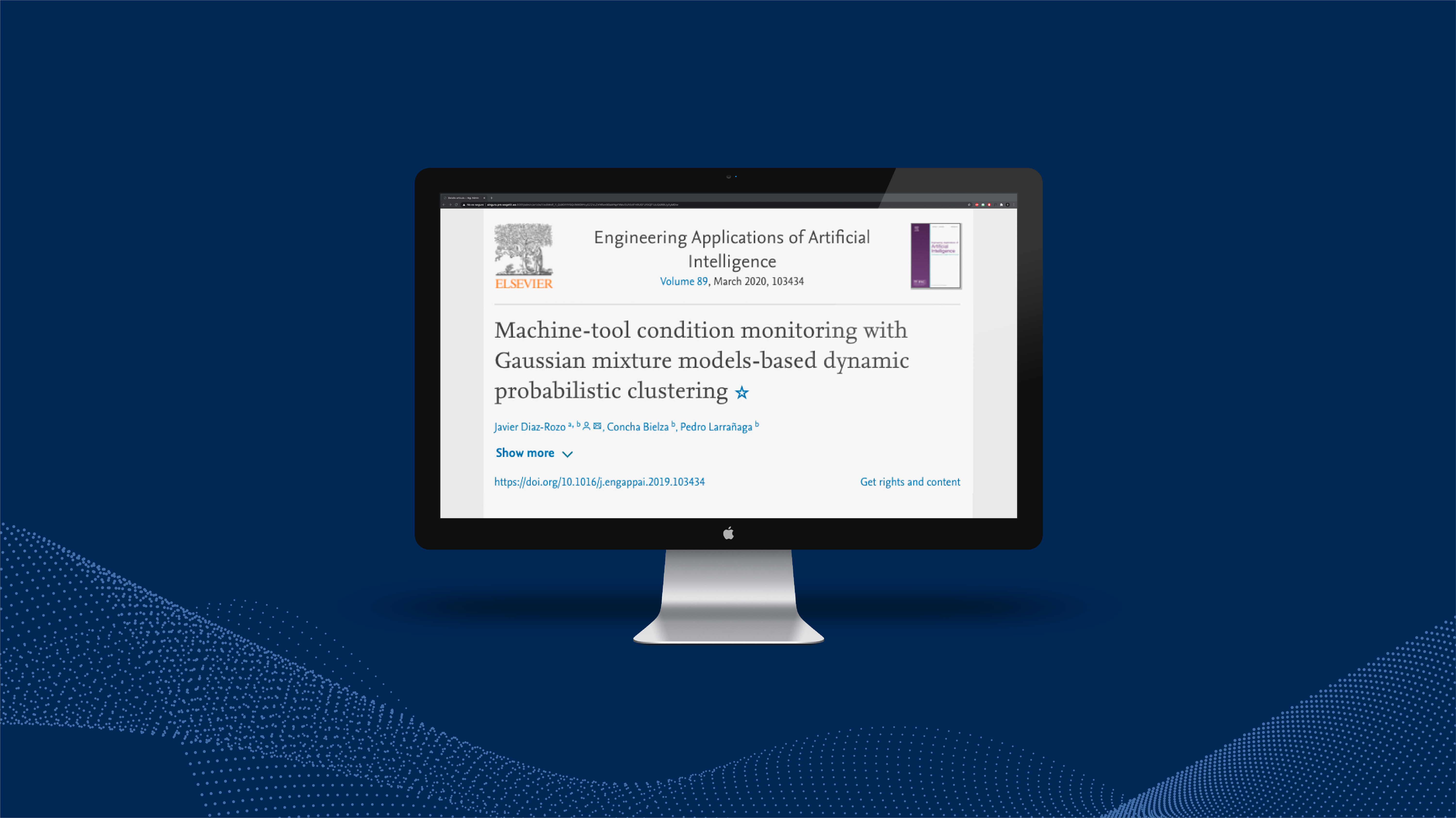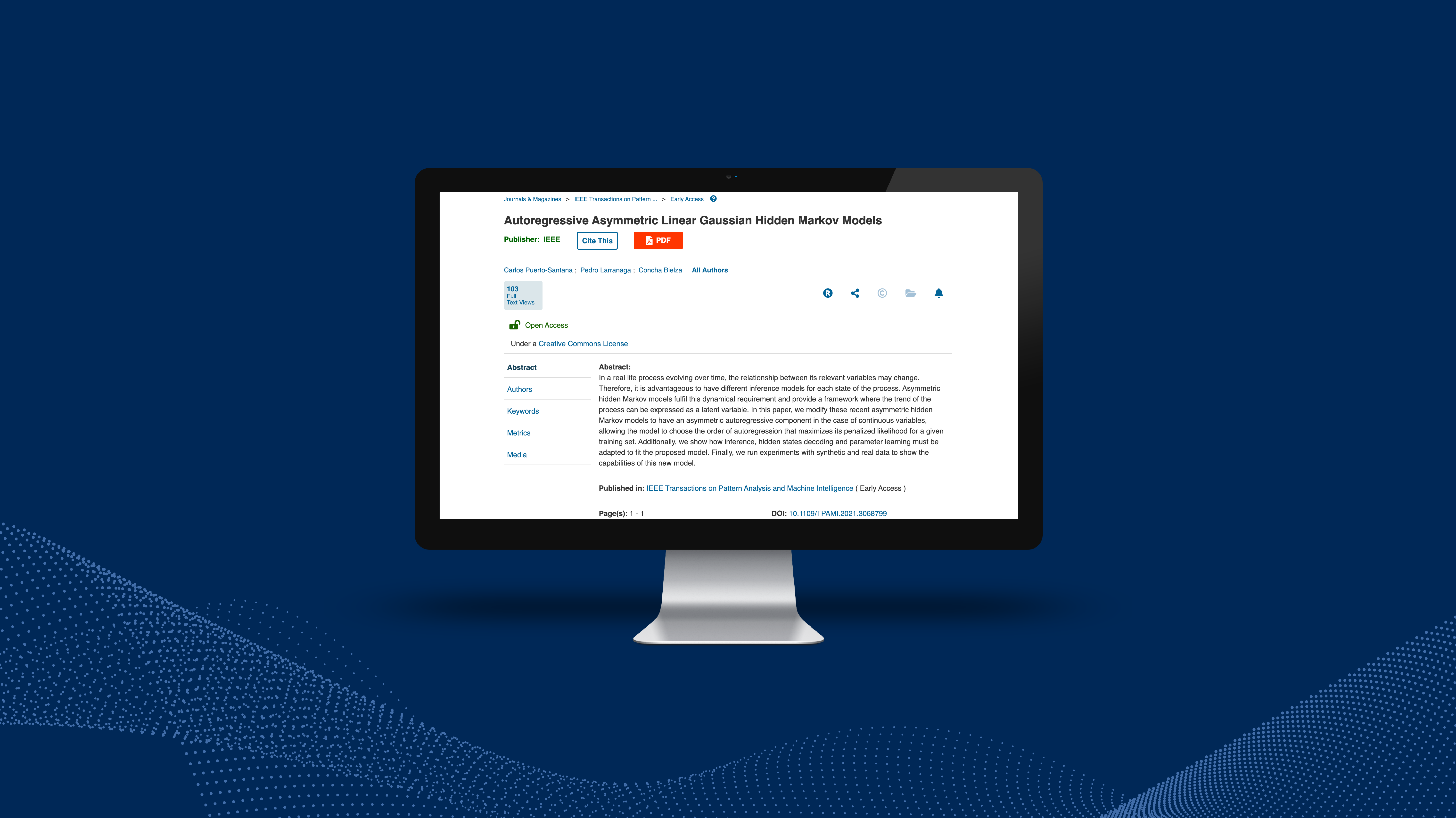.png)
25.09.2020 | Publications
The Journal “Engineering Applications of Artificial Intelligence”, published by Elsevier, provides an international forum of work describing the practical application of AI methods in all branches of engineering. The article “Machine-tool condition monitoring with Gaussian mixture models-based dynamic probabilistic clustering”, presented by Aingura IIoT CTO Javier Díaz and our most important research partners, has been included in its 89th Volume[1] of this year.
As the article’s abstract reads: “The combination of artificial intelligence with data, computing power, and new algorithms can provide important tools for solving engineering problems, such as machine-tool condition monitoring. However, many of these problems require algorithms that can perform in highly dynamic scenarios where the data streams have extremely high sampling rates from different types of variables. The unsupervised learning algorithm based on Gaussian mixture models called Gaussian-based dynamic probabilistic clustering (GDPC) is one of these tools. However, this algorithm may have major limitations if a large amount of concept drifts associated with transients occurs within the data stream. GDPC becomes unstable under these conditions, so we propose a new algorithm called GDPC+ to increase its robustness. GDPC+ represents an important improvement because we introduce: (a) automatic selection of the number of mixture components based on the Bayesian information criterion (BIC), and (b) concept drift transition stabilization based on Cauchy–Schwarz divergence integrated with the Dickey–Fuller test. Thus, GDPC+ can perform better in highly dynamic scenarios than GDPC in terms of the number of false positives. The behavior of GDPC+ was investigated using random synthetic data streams and in a real data stream-based condition monitoring obtained from a machine-tool that produces engine crankshafts at high speed. We found that the initial temporal window size can be used to adapt the algorithm to different analytical requirements. The clustering results were also investigated by induction of the rules generated by the repeated incremental pruning to produce error reduction (RIPPER) algorithm in order to provide insights from the underlying monitored process and its associated concept drifts.”
After the publication of the article, Aingura IIoT has worked to incorporate the proposed procedure to our own Edge device, Aingura Insights, working with variables sampled at frequencies up to 32 kHz, achieving an accuracy of 98% with only 2% of false alarms. Additionally, the fundamentals of this algorithm are being used as the backbone of other Aingura IIoT’s Machine Learning-based products oriented to ball-bearing analysis, energy systems and infrastructure monitoring. This will guarantee the products’ accuracy due to their new capabilities of robustness within dynamic scenarios, where normal degradation of elements can affect the operation of any other traditional Machine Learning algorithms.
Follow this link to access the article
[1] J. Diaz-Rozo, C. Bielza, y P. Larrañaga, «Machine-tool condition monitoring with Gaussian mixture models-based dynamic probabilistic clustering», Engineering Applications of Artificial Intelligence, vol. 89, p. 103434, mar. 2020.



